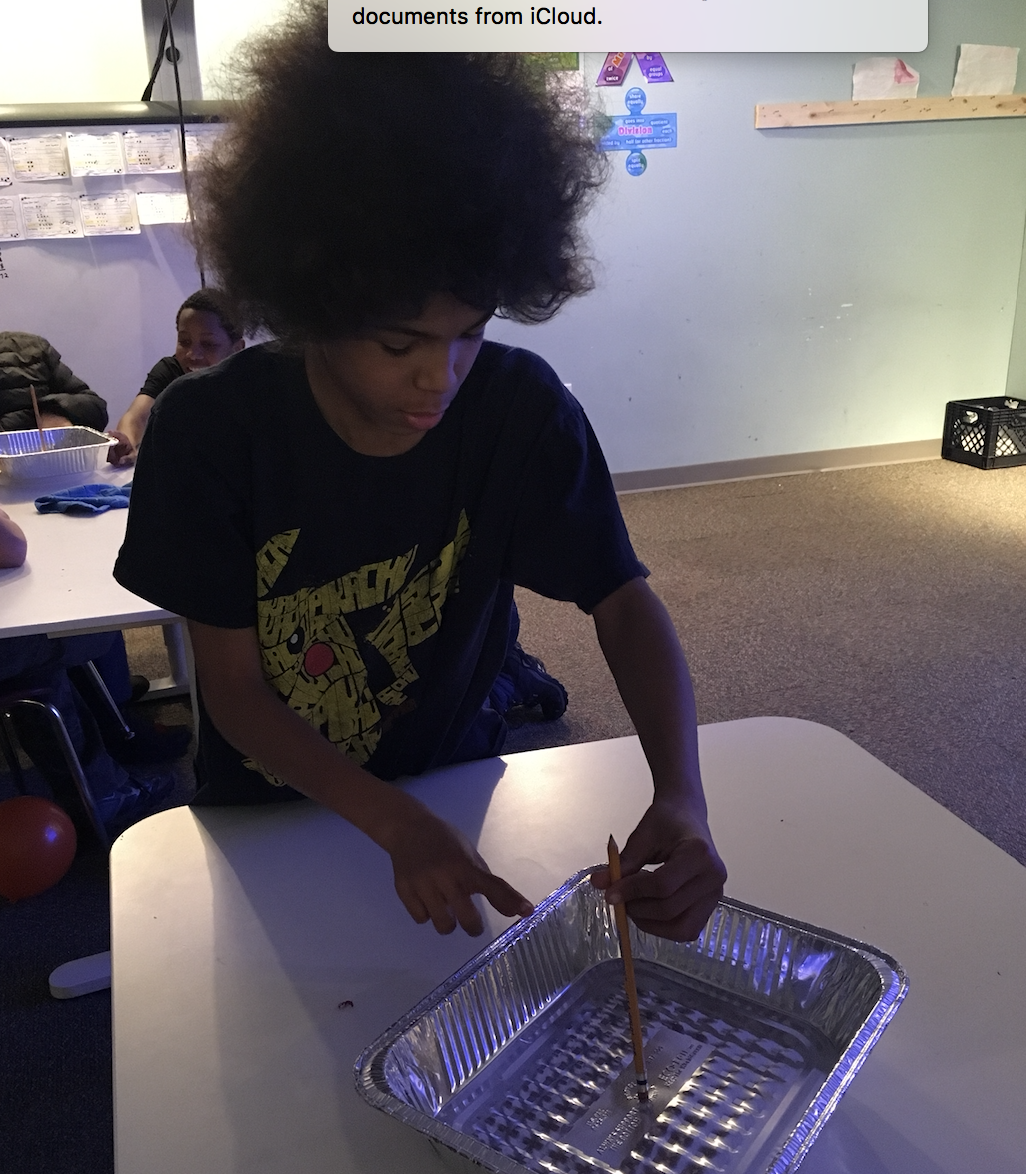03.23.2018
Experiment Leaders: Lizzy and Matheius
For this set of experiments, we taught the students the essential ingredients for making a thunderstorm!
We began by teaching them about the first ingredient needed for creating a thunderstorm: heat transfer, specifically convection. This process is essential for creating the temperature gradients that lead to the rise of warm air and fall of cold air. The first experiment we ran demonstrated this process: blue ice cubes were placed on one side of a container filled with warm water. Students placed two-three drops of red food coloring at the other end of the container and watched as the cold, blue dye diffused to the bottom of the container, while the warm, red dye diffused to the top. The circulation of colors was observed until the temperatures equilibrated, resulting in a purple solution.
The second ingredient we taught the students about was cloud formation and the process of generating condensation. As warm air rises from the earth, it begins to cool, ultimately condensing on dust and pollen particles to form droplets. These droplets accumulate, resulting in the formation of clouds. During thunderstorms, more and more warm air rises, leading to bigger, denser clouds that eventually cannot hold the weight of the water molecules. As the water molecules are heavier than dust or pollen particles, they begin to precipitate out of the cloud and fall to the ground, generating rain. To demonstrate cloud formation, the students took a bottle filled with warm water, and with the help of a group leader, lite a match and dropped it into the bottle, quickly capping it. The addition of smoke to the bottle drew more water molecules into the gas phase, creating droplets that accumulated to form a cloud. After uncapping the bottle, the students could squeeze the bottle, thereby increasing the pressure inside the bottle and pushing more water molecules to the gas phase, to produce puffs of clouds.
The third and final ingredient we discussed was the movement of molecules against one another, creating electrical charges in the air, which we perceive as lightning. To convince the students that charges are present all around us, we first had them blow up balloons and create static electricity by rubbing the balloon on wool or their hair. The charged balloon could then stick to the wall without any support! The final experiment we ran involved using an aluminum pie can and a styrofoam plate that was charged by rubbing it with wool. When the aluminum pie can was placed on top of the charged styrofoam plate, electric charges could be transferred to the student’s finger upon touching the pie can, creating a small, yet audible, spark!
During the discussion phases of the activities, the students showed a clear understanding of how these experiments demonstrated each ingredient--(1) convection, (2) clouds with condensation, and (3) electrical charges--and how ultimately they can come together to form a thunderstorm. We are super excited to go back next month and continue advancing their scientific understanding and appreciation!
